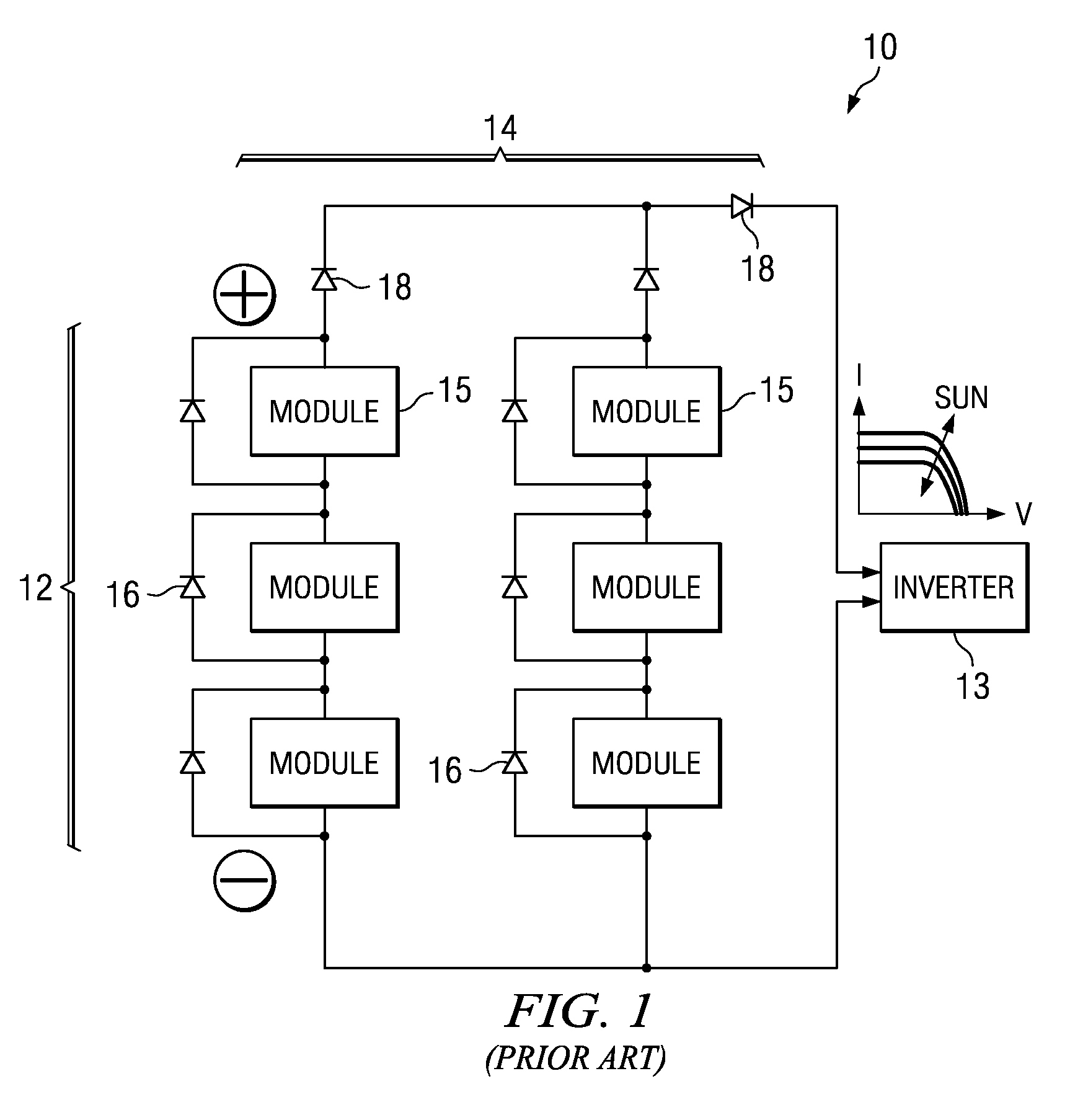Photovoltaic DC/DC micro-converter
a micro-converter and photovoltaic technology, applied in the direction of discharge tube main electrodes, pv power plants, solid thermionic cathodes, etc., can solve the problems of reducing the performance, i.e., dc output, of the entire pv array, and increasing the difficulty of efficiently managing power, etc., to achieve efficient control, maximize design flexibility, and enhance longevity
- Summary
- Abstract
- Description
- Claims
- Application Information
AI Technical Summary
Benefits of technology
Problems solved by technology
Method used
Image
Examples
Embodiment Construction
[0033]Referring to FIGS. 2-5 a photovoltaic (PV) system controlled at the string-level by plural DC / DC micro-converters will now be described. The PV system 29 and, more specifically, the control system 21 for the PV system 29 is structured and arranged to extract maximum individual string power (hereinafter, the “Maximum Power Point” or “MPP”) from each of the PV modules 22 in each string 25 of serial-connected PV modules that make up the power-generating portion of the PV system 29.
[0034]The desirability of string-level control is shown illustratively in FIG. 5, which shows current-voltage curves 52, 54, and 56 for three discrete strings of PV modules. Each of the curves 52, 54, and 56 includes an MPP 55 at some location on the curves. The MPP 55 refers to the point of maximum power for an entire string 25 of PV modules 22.
[0035]Because of expected mismatch between PV strings 25, the corresponding MPPs 55 for each string 25 occur or may occur at different currents and / or at differ...
PUM
 Login to View More
Login to View More Abstract
Description
Claims
Application Information
 Login to View More
Login to View More - R&D
- Intellectual Property
- Life Sciences
- Materials
- Tech Scout
- Unparalleled Data Quality
- Higher Quality Content
- 60% Fewer Hallucinations
Browse by: Latest US Patents, China's latest patents, Technical Efficacy Thesaurus, Application Domain, Technology Topic, Popular Technical Reports.
© 2025 PatSnap. All rights reserved.Legal|Privacy policy|Modern Slavery Act Transparency Statement|Sitemap|About US| Contact US: help@patsnap.com



